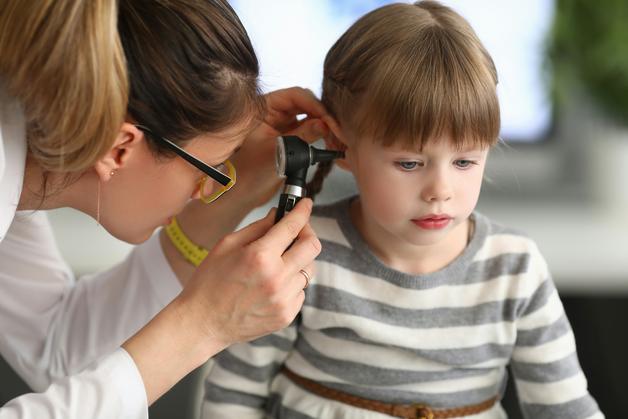Parents everywhere know the anxious glance when a child tugs persistently at an ear or wakes through the night—frowning, febrile, inconsolable. Otitis. A word that might sound technical, yet, behind those soft syllables, lies one of childhood’s most unwelcome guests: ear inflammation or infection. Whether it’s a sudden jolt of pain in the toddler after a runny nose, stubborn fluid dulling a child’s hearing, or relentless itching post-swim, otitis is a frequent adversary. What’s going on in those tiny ears? When should you worry, seek help, or simply comfort at home? Discover the palette of otitis types and what they really mean—decipher symptoms, untangle causes, explore medical strategies, and uncover daily prevention habits that put you back in control. Because yes, when otitis strikes, every parent wants not only answers but reassurance, clarity, and action.
understanding otitis: what parents need to know
Otitis is more than a single diagnosis; it’s a cluster of conditions affecting the ear’s intricate architecture. Think of the ear as divided into three zones: the outer ear (from cartilage shell to eardrum), the middle ear (the air-filled space behind the eardrum, home to the smallest bones in the human body), and the inner ear (where hearing and balance originate). The stage of attack shapes the name: otitis externa if it’s the ear canal, otitis media in the space behind the eardrum, otitis interna (labyrinthitis) when the deepest structures succumb.
But why are children the main target? The anatomical answer: narrower, more horizontal Eustachian tubes that easily block or fill. The practical answer: developing immune systems, group childcare, pacifiers, and runny noses all tip the odds. Otitis is relentless, but knowledge—and swift response—form the first line of defense.
types of otitis: a breakdown
otitis externa (“swimmer’s ear”)
Otitis externa flares up when water lingers in the ear canal, especially after swimming or bathing, but also after aggressive cleaning or minor injuries. Symptoms? Sharp pain, itching, swelling, sometimes a telltale ear discharge. Young swimmers and curious hands probing with cotton swabs fuel this form. While acute cases bring pronounced pain and redness, chronic otitis externa can track alongside eczema or persistent irritation. In rare scenarios—mainly in adults with diabetes or people who are immunocompromised—otitis externa can turn sinister and invade surrounding tissues (necrotizing otitis externa).
otitis media: common enemy of childhood
The poster child of middle ear inflammation is acute otitis media. This condition almost always arrives after a cold or respiratory virus, smuggling bacteria or viruses through the Eustachian tube. The result: a symphony of ear pain, fever, irritability, and, when severe, fluid drainage if the eardrum ruptures. Children cry, tug at ears, struggle with hearing loss, and sometimes refuse to eat or sleep.
When the fluid lingers without a raging infection, the condition is coined otitis media with effusion—often silent, yet persistent, causing fullness or muffled hearing but not pain. Recurrent or stubborn cases may evolve into chronic suppurative otitis media: a perforated eardrum and continuous discharge that sometimes demands surgical intervention (tympanostomy tubes). Adhesive otitis takes a different path, where, after long-standing hearing tube blockage, the eardrum retracts and sticks to inner structures.
otitis interna: labyrinthine risks
When infection goes deep—very deep—it strikes the inner ear: otitis interna, usually called labyrinthitis. Expect more than pain: sudden vertigo, severe dizziness, balance disturbance, ringing (tinnitus), and marked hearing loss—a truly alarming scenario needing urgent attention. Viruses are the prime culprits, but bacteria can be involved, too.
other and rare forms
Sometimes, the trigger is pressure change: barotraumatic otitis, familiar to families during flights—especially if a child’s nose is blocked by a cold. Less frequent but no less uncomfortable, fungal otitis externa (otomycosis) arises in moist environments or after repeated antibiotic drops.
causes and risk factors: why otitis develops
What primes an ear for otitis? At the top of the list are bacterial pathogens like Streptococcus pneumoniae, viral invaders, and, uniquely in otitis externa, fungal species like Candida or Aspergillus. Yet, so many everyday factors amplify the risk:
- Age—The labyrinth of the infant ear is more vulnerable.
- Frequent daycare—Viral sharing ground!
- Secondhand smoke exposure—Cigarette smoke irritates and impairs normal ear defense.
- Pacifier use beyond 6 months—Evidence links it to increased risk for otitis media.
- Swimming or retained moisture—Perfect conditions for outer ear issues.
- Trauma to the ear canal—Cotton swabs or inserted toys are notorious offenders.
- Nasal allergies or eczema—Inflammation anywhere in the upper airway can interfere with drainage.
- Family predisposition and differences in ear anatomy.
- Congestion—Respiratory infections can block the delicate pathways of ear ventilation.
Each risk factor paints a piece of the otitis puzzle. Not every child exposed will develop otitis, but recognizing these influences arms parents with the power of anticipation (and sometimes prevention).
symptoms by age and type: what parents should watch for
Every parent knows: young children rarely announce ear pain directly. With otitis, classic telltale signs include:
- Infants and toddlers: Unexplained fussiness, tugging at the ear, sleep disruption, poor feeding, or changes in hearing response. Balance may falter.
- Older children: Direct reports of pain, blocked sensation, hearing reduction, or noticing fluid.
- Teens/adults: Subtler complaints—dull pain, hearing changes, persistent fluid, or itching.
- Older adults: Sometimes only unsteadiness or confusion gives the hint of severe forms like necrotizing otitis externa.
- Labyrinthitis: Dizziness that won’t resolve, profound hearing loss, imbalance.
Persistent fever, symptoms unresponsive to home comfort, or any rapidly worsening distress need urgent attention.
diagnosis: what parents can expect from evaluation
Assessment combines detective work and simple equipment. Expect your clinician to review medical history, then examine visually with an otoscope, looking for redness, swelling, fluid, or eardrum perforation. For further clarification, pneumatic otoscopy may be used—testing eardrum mobility. Special investigations, when needed, include:
- Audiometry—measures hearing loss
- Tympanometry—checks pressure and fluid behind the eardrum
- Microbial culture—especially for recurrent or stubborn otitis
- Imaging—if complications like mastoiditis or abscess are suspected
Always ask questions and voice any hesitations; clear communication ensures a thorough approach.
treatment and home care: making evidence-based choices
medical treatment strategies
- Pain relief: Reliable friends—acetaminophen and ibuprofen—top the list for comfort. Warm (never hot) compresses also help.
- Antibiotics: Reserved for clear-cut bacterial otitis media in young children, high fevers, or when little ones appear unwell. For many, especially when otitis is viral, patience and supportive care win the day.
- Ear drops: The gold standard for otitis externa—antibiotic or antifungal as warranted.
- Tympanostomy tubes: Small, ventilating ear tubes can be a game changer for stubborn or frequent middle ear infections.
- Pressure equalization measures: During air travel, drinking or sucking on a bottle helps balance pressures during descent and ascent.
practical home advice and preventive habits
- Gentle nasal hygiene: Helping your child clear congestion keeps the Eustachian tube flowing.
- Dry ears thoroughly post-swim: A soft towel, gentle tilt, or, for at-risk kids, protective earplugs.
- Warm compress: Apply at the base of the ear, never inside.
- Never use cotton swabs inside a child’s ear canal.
Natural remedies are frequently discussed, but evidence varies; avoid putting any fluids, oils, or herbal products into the ear without medical advice. What soothes one family may not work for another—trust reputable sources and always check with your pediatrician.
prevention: daily strategies to minimize otitis
Unlocking prevention doesn’t have to mean radical upheaval:
- Ditch the cotton swabs—the ear’s self-cleaning is its best defense.
- Keep the home smoke-free—air irritants set the stage for infection.
- Address allergies promptly—medications or allergen avoidance reduce persistent inflammation.
- Handwashing—limiting respiratory viruses means fewer cases of otitis media.
- Breastfeeding—if possible, it provides protective antibodies.
- Limit pacifier use after six months.
- Reconsider frequent group daycare (when feasible) during seasonal peaks.
- Manage air travel: Offer drinks, snacks, or a pacifier at take-off and landing.
- Investigate chronic symptoms: Consider discussing habitually recurrent otitis with a professional—sometimes underlying food sensitivities or less obvious allergies play a hidden role.
complications: recognizing when to seek help
Most episodes resolve with basic care, but certain complications require immediate action:
- Eardrum perforation: Sudden discharge and temporary hearing loss—usually self-limited, but best monitored.
- Mastoiditis: Swelling behind the ear, persistent fever, or redness—demands urgent evaluation.
- Chronic hearing loss: Ongoing difficulty signals the need for hearing assessment.
- Rare risks: Meningitis, brain abscess, or widespread infection—though very unusual, these associations are why persistence warrants a doctor’s input.
Keep watch for communication or balance changes, persistent pain, high fever, or discharge that won’t resolve.
myths vs. facts: setting parental minds at ease
Do antibiotics cure all otitis? Not quite—overuse may even breed resistance, so prudent use is key. Is every ear tug alarming? Not always—teething, tiredness, or mild discomfort may be unrelated. Are cotton swabs ever reasonable? Medical consensus says, nearly never. Can vaccines eliminate the risk? They protect, but aren’t an all-powerful shield. And while swimming gets blamed often, proper ear care after aquatic adventures makes all the difference.
A common thread: individualized strategies, clear-eyed evaluation, and a measured partnership with healthcare professionals.
care across ages and vulnerable populations
- Babies and toddlers: Be attentive to subtle cues—crying, ear-pulling, or feeding changes. For infants under six months or ongoing issues, prompt consultation is warranted.
- Older children and adults: Persistent pain, hearing changes, or abnormal discharge merit timely follow-up.
- Elderly: Monitor for even subtle signs—sometimes the only clue is confusion or a change in baseline function.
- Immunocompromised: Detailed monitoring, since progression may be swift—never hesitate to seek early input.
key takeaways
- Otitis is a complex, common childhood condition that can affect anyone. Its manifestations—pain, fluid, hearing loss, fever or behavioral change—should prompt careful attention.
- Recognizing the subtle symptoms across ages helps families take action early, minimizing discomfort and long-term impact.
- Treatment options balance simple pain relief with targeted interventions like antibiotics or tubes when essential; evidence steers every decision.
- Prevention is real: small daily choices (from smoke-free air to dry ears post-swim) reshape risk.
- Stay confident: resources, scientific knowledge, and medical support are at your fingertips. For tailored guidance and free child health questionnaires, download the Heloa app—your ally in family health, every day.
Questions Parents Ask
Can otitis cause long-term hearing problems?
While most cases of otitis clear up without leaving permanent traces, some situations—especially when inflammation is repeated or fluid remains trapped—can temporarily affect hearing. Rarely, prolonged or chronic forms may have a longer-lasting impact. Rassurez-vous, regular medical follow-up and early attention to persistent symptoms help greatly reduce the risk of lasting hearing loss.
When should a parent worry about a child’s ear pain?
It’s completely normal to feel concerned if your child mentions or shows signs of ear pain. If ear pain is severe, lasts more than a couple of days, is accompanied by high fever, sudden hearing loss, swelling behind the ear, or if your child seems very unwell or unusually drowsy, il importe de consulter rapidement un professionnel de santé. Most ear discomfort is mild and short-lived, but attentive observation helps spot when extra care is necessary.
Is otitis contagious?
Otitis itself isn’t directly contagious between children. However, the viruses or bacteria that often trigger middle ear infections—such as after a cold—can certainly spread from person to person. Good handwashing habits and avoiding close contact when sick are simple and effective ways to protect the whole family.

Further reading:









